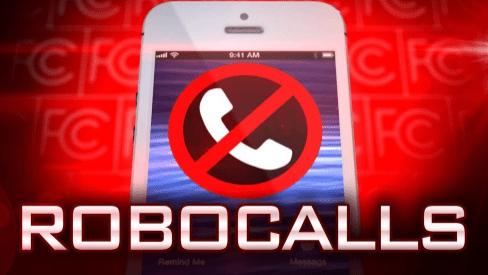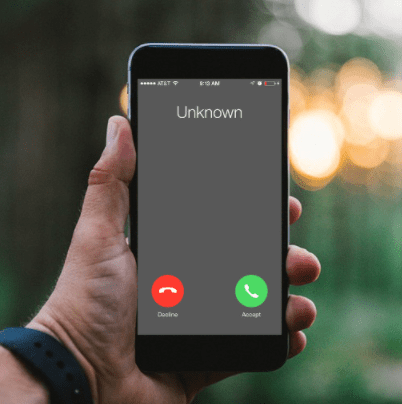More likely than not, you’ve received robocalls on your mobile phone at least once. And, if you have, you probably already know just how annoying it is. You’ll have your phone ring and think that it’s an important call. Then, you’ll find out that no one is actually at the other end of the line. Rather, it’s a prerecorded marketing message from a company. And they just want you to buy their new product/service or, worse, make you a scamming victim.

People thought that unwanted automated calls would stop with the death of landlines. Unfortunately, this hasn’t been the case since robocalls are still around. In fact, the innovations brought about by modern technology has helped them evolve. Companies and individuals now find it quicker and easier to make robocalls and target a large number of people. This has led to tens of millions of robocalls that are made across the United States on a daily basis.
Not All That Bad
It’s important to note that not all robocalls are scams or unwanted marketing. Authorized agencies use automated call technology to send weather information. The same thing goes for alerting people about natural disasters. Schools and public utility service providers also use this system. to send important announcements to parents, guardians, tenants, and property owners. Political organizations even use robocalling to inform voters about their platforms and gather more votes during elections.

The fact that automated call technologies are used for legitimate reasons has a downside, however. It is one of the reasons why the authorities find it hard to squash unwanted robocalls. After all, they can’t completely block scam robocalls without also blocking the automated calls that people need or want to receive. Currently, there’s no hardware or software that has a 100 percent success rate in distinguishing between legitimate and non-legitimate robocalls. Although, many tech companies are designing tools for this function.
Robocall Tactics
Voice over Internet Protocol (VoIP) has made robocalling simpler, faster, and cheaper. VoIP hardware and software are not expensive, which means that anyone with a decent budget can get their hands on these products. The technology is also easy to master. So, people don’t need to face a steep learning curve before they can start making robocalls.
Over time, marketers and scammers have developed methods to reach more people without getting caught. One of the most effective is “spoofing”. This involves disguising their phone number so the call recipient will see a different number on their phone. This ensures that call recipients won’t see any identifying information about the caller. And that makes it difficult for the robocall to be traced.

Some have even taken things further by using “neighbor spoofing”. Basically, this involves disguising their number to make it look like they have a similar phone number as the person they’re calling.
People who have experienced this have received calls from numbers that have the same area code and prefix as they do. This makes them think that the calls are from people they know. For example, they’d think it is their neighbor or their child’s teacher. The chance that they’ll answer the phone then increases.
Steps Taken by the FCC
The Federal Communications Commission (FCC) is aware of robocalls. In fact, FCC chairman Ajit Pai has stated that he has received numerous robocalls. Even on the BlackBerry phone he uses for work.
To fight back against these unwanted automated calls, the FCC is looking into developing a call authentication system. Essentially, this would allowmobile phone carriers to check and confirm that the phone number that’s making a call is legitimate. As Pai explains, each phone number has a unique identifier, and phone companies can inspect this identifier to know if an incoming call is from a real person or not. Once the number’s digital fingerprint passes the test, phone companies will inform the call recipient that the call is legitimate, and people can answer their phones with confidence knowing that they’re talking to a real person — not to a scam artist or unwanted marketer.
FCC Plans Better Blocking Measures
The FCC is also looking for ways to block calls from unassigned phone numbers. Many people behind robocalls use phone numbers that have never been assigned to a person or businesses. So, it’s important to find a technique to block calls from these numbers.
The commission also voted on a proposal that looked into preventing unwanted calls after a phone number is assigned from one customer to another. Remember: when you get a new line, there’s no way of knowing whether you’re getting a previously unassigned number or one that used to belong to another person. If it’s the latter, the previous owner may have agreed to receive marketing offers from a certain company. Which means that you will be receiving these calls once the line is transferred to you.
Currently, companies are not automatically informed when their customers change numbers, so they’ll keep sending you robocalls even if you didn’t ask for them. This is not only annoying for you but can also be dangerous for businesses since they might be unknowingly violating the law, which makes them subject to penalties.
To find a way around this issue, the FCC is thinking about requiring phone companies to report phone number reassignments. These information will then be placed in a database, which can be accessed by companies to confirm that they’re calling the right people.

Other Solutions
The Federal Communications Commission isn’t the only organization that’s working to help end unwanted robocalls. The Federal Trade Commission (FTC), which helps regulate robocalls through its Telemarketing Sales Rules, has been actively bringing the attention of law enforcement on people or organizations that illegally conduct automated calls.
Telecommunications carriers are also taking steps to help protect their customers from robocalls. AT&T, for example, offers the free Call Protect app (compatible with both iOS and Android devices) to its customers. T-Mobile, on the other hand, provides the Scam ID service (which alerts you when you’re receiving a potential scam call) and the Scam Block solution (which automatically blocks calls from numbers owned by known scammers).
Many app developers came up with applications designed to block robocalls. These apps include YouMail, NoMoRoBo, and Hiya.
What You Can Do

Before taking steps to block robocalls, you have to realize that you’ve probably given permission to receive these calls. This can happen when you buy a product or service (either online or in person) and you check the box stating that you agree to receive direct marketing from the company. If this is the case, you’ll have to see if you can revoke your permission and stop the company from robocalling you.
You can also take the following steps to avoid robocalls:
- Don’t answer a call from a number you don’t recognize.
- If you answer a call and realize it’s a robocall, hang up right away. Avoid pressing any buttons on your phone, and don’t do whatever the robocall tells you to do (like giving them your Social Security number or other personal information). Engaging with them shows that you’re responsive and will encourage them to keep on calling you.
- If your telecommunications carrier offers a call-blocking app or service, take advantage of it. If it doesn’t, consider downloading a reliable and trustworthy app that blocks robocalls.
- Contact the FCC or FTC and file a complaint. Make sure to keep your call records since you might need to present them to support your complaint.
Being vigilant about robocalls is one of the best ways to protect yourself from them and ensuring they won’t be able to steal your important information.


